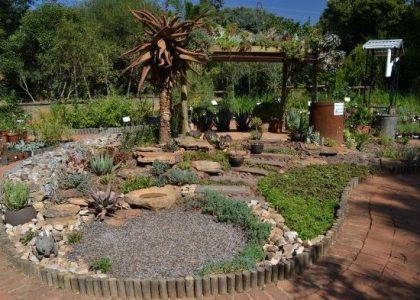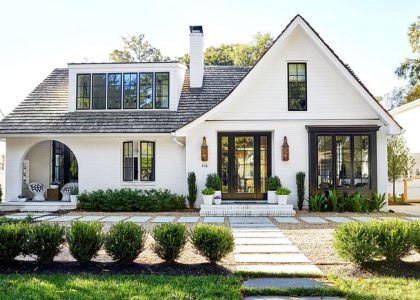Zone planning is a concept in landscape design that involves dividing a landscape into distinct zones based on the function of each area. This approach to landscape design allows for a more informed and organized design process, as it allows for the creation of a plan that is tailored to the specific needs of the landscape. Zone planning also allows for the efficient use of resources, as it allows for the creation of a plan that is tailored to the specific needs of the landscape. Zone planning can be used to create a variety of different types of landscapes, from residential to commercial, and can be used to create a variety of different types of outdoor spaces, from gardens to parks. Zone planning is an important concept in landscape design, as it allows for the creation of a plan that is tailored to the specific needs of the landscape.
Exploring the Benefits of Zone Planning for Landscape Design
Zone planning is a popular and effective approach to landscape design that can be used to create aesthetically pleasing and functional outdoor spaces. This approach involves dividing the landscape into distinct zones, each with its own purpose and design elements. By using zone planning, homeowners and landscape designers can create a cohesive and attractive outdoor space that meets the needs of the homeowner and complements the surrounding environment.
The primary benefit of zone planning is that it allows for the creation of a unified and aesthetically pleasing outdoor space. By dividing the landscape into distinct zones, each with its own purpose and design elements, the overall design of the landscape can be unified and balanced. This approach also allows for the creation of a variety of outdoor spaces, such as seating areas, outdoor kitchens, and gardens, that can be used for entertaining, relaxing, or simply enjoying the outdoors.
Zone planning also allows for the efficient use of space. By dividing the landscape into distinct zones, each with its own purpose and design elements, the overall design of the landscape can be optimized to make the most of the available space. This approach also allows for the efficient use of resources, such as water and energy, as well as the efficient use of materials, such as plants and hardscaping elements.
In addition, zone planning allows for the creation of a landscape that is both aesthetically pleasing and functional. By dividing the landscape into distinct zones, each with its own purpose and design elements, the overall design of the landscape can be tailored to meet the needs of the homeowner. This approach also allows for the creation of a landscape that is both aesthetically pleasing and functional, as each zone can be designed to meet the specific needs of the homeowner.
Finally, zone planning allows for the creation of a landscape that is both sustainable and environmentally friendly. By dividing the landscape into distinct zones, each with its own purpose and design elements, the overall design of the landscape can be tailored to meet the needs of the environment. This approach also allows for the efficient use of resources, such as water and energy, as well as the efficient use of materials, such as plants and hardscaping elements.
In conclusion, zone planning is a popular and effective approach to landscape design that can be used to create aesthetically pleasing and functional outdoor spaces. By dividing the landscape into distinct zones, each with its own purpose and design elements, the overall design of the landscape can be unified and balanced. This approach also allows for the efficient use of space, resources, and materials, as well as the creation of a landscape that is both aesthetically pleasing and functional. Finally, zone planning allows for the creation of a landscape that is both sustainable and environmentally friendly.
How to Create an Effective Zone Plan for Your Landscape Design Project
Creating an effective zone plan for a landscape design project is an important step in the design process. A zone plan is a map of the landscape that divides the area into different zones based on the function of each space. This helps to ensure that the design is organized and efficient, and that each area of the landscape is used to its fullest potential. Here are some tips for creating an effective zone plan for your landscape design project.
1. Identify the primary purpose of the landscape. Before you begin creating a zone plan, it is important to identify the primary purpose of the landscape. This will help you determine which areas should be given priority in the design and which areas can be used for secondary purposes.
2. Divide the landscape into zones. Once you have identified the primary purpose of the landscape, you can begin dividing it into zones. Consider the size and shape of the landscape, as well as the existing features, when deciding how to divide the space.
3. Assign a purpose to each zone. Once you have divided the landscape into zones, you should assign a purpose to each one. This will help you determine which features should be included in each zone and how they should be arranged.
4. Consider the flow of the landscape. When creating a zone plan, it is important to consider the flow of the landscape. This will help you create a design that is easy to navigate and that encourages people to move through the space.
5. Incorporate features into the design. Once you have identified the purpose of each zone and considered the flow of the landscape, you can begin incorporating features into the design. Consider the size and shape of the landscape, as well as the existing features, when deciding which features to include.
Creating an effective zone plan for a landscape design project is an important step in the design process. By following these tips, you can ensure that your design is organized and efficient, and that each area of the landscape is used to its fullest potential.
Conclusion
Zone planning is an important tool for informed landscape design. It allows designers to create a plan that takes into account the unique characteristics of each area of the landscape, such as soil type, climate, and vegetation. By understanding the different zones of a landscape, designers can create a plan that is tailored to the specific needs of the site and its inhabitants. Zone planning is an essential part of creating a successful and sustainable landscape design.




